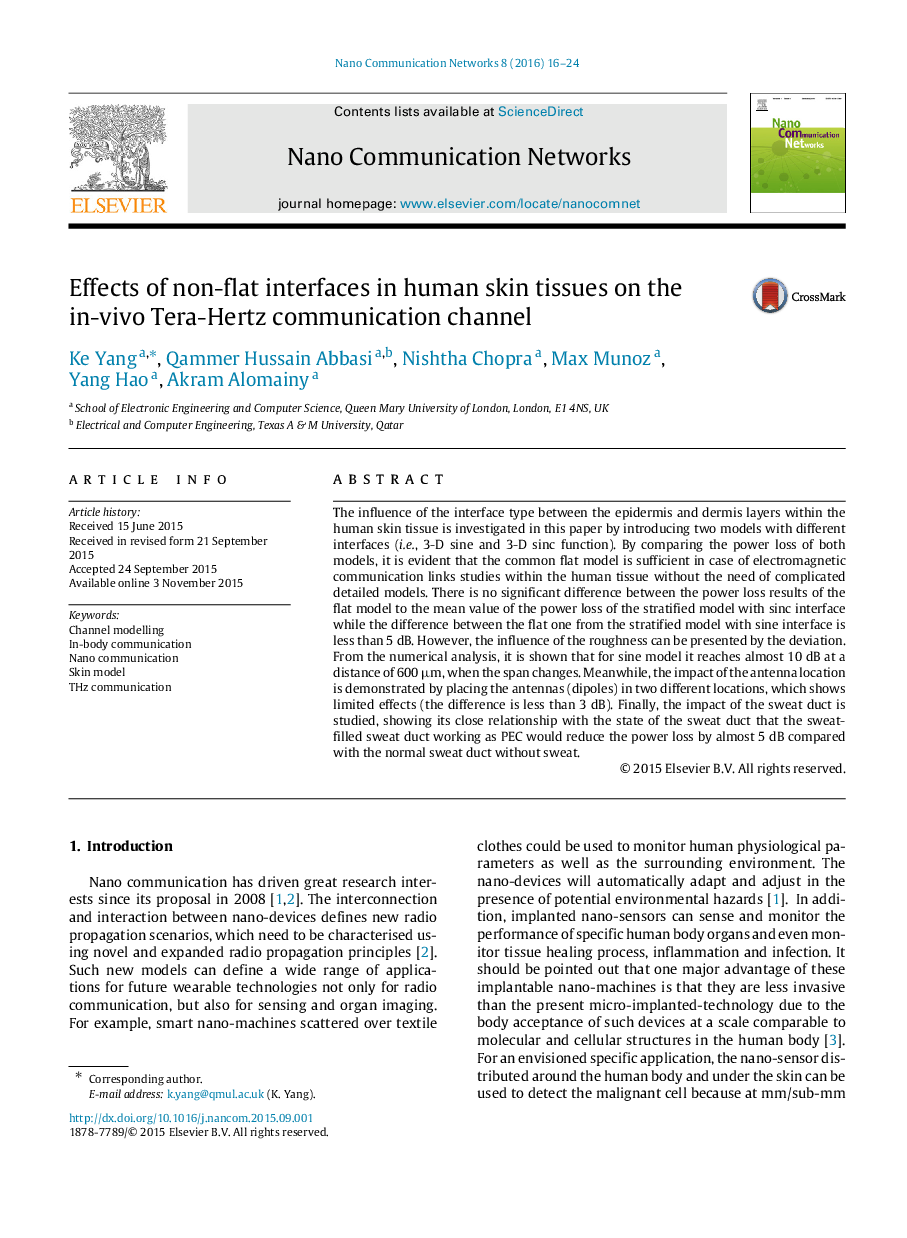| Article ID | Journal | Published Year | Pages | File Type |
|---|---|---|---|---|
| 463701 | Nano Communication Networks | 2016 | 9 Pages |
The influence of the interface type between the epidermis and dermis layers within the human skin tissue is investigated in this paper by introducing two models with different interfaces (i.e. , 3-D sine and 3-D sinc function). By comparing the power loss of both models, it is evident that the common flat model is sufficient in case of electromagnetic communication links studies within the human tissue without the need of complicated detailed models. There is no significant difference between the power loss results of the flat model to the mean value of the power loss of the stratified model with sinc interface while the difference between the flat one from the stratified model with sine interface is less than 5 dB. However, the influence of the roughness can be presented by the deviation. From the numerical analysis, it is shown that for sine model it reaches almost 10 dB at a distance of 600μm, when the span changes. Meanwhile, the impact of the antenna location is demonstrated by placing the antennas (dipoles) in two different locations, which shows limited effects (the difference is less than 3 dB). Finally, the impact of the sweat duct is studied, showing its close relationship with the state of the sweat duct that the sweat-filled sweat duct working as PEC would reduce the power loss by almost 5 dB compared with the normal sweat duct without sweat.
